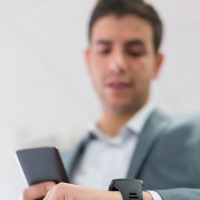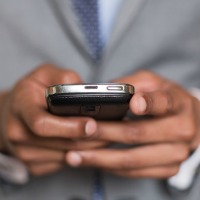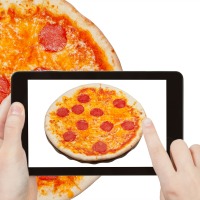 As fitness trackers increase in popularity, consumers are becoming more comfortable with wrist wearables, including Apple Watch and now interactive event wristbands. We’ve been tracking this evolution of wearables and the early success Apple Watch has seen in the banking and travel industries. Now, Apple Watch is changing the way retailers cater to shoppers in a competitive market.
As fitness trackers increase in popularity, consumers are becoming more comfortable with wrist wearables, including Apple Watch and now interactive event wristbands. We’ve been tracking this evolution of wearables and the early success Apple Watch has seen in the banking and travel industries. Now, Apple Watch is changing the way retailers cater to shoppers in a competitive market.
But other forms of wrist wearables are also making traction. Passive pre-programmed wearables are steadily increasing in use by brands at event locations like stadiums, music festivals and theme parks. Both are changing the notion of mobility while catering to certain consumer needs.
Apple Watch Transforms the Retail Experience
As retailers have struggled to find ways to leverage mobile, Target is leading the trend toward creating an integrated shopping experience using Apple Watch. Different than using your smartphone in-store, Apple Watch gives the customer flexibility of not having to worry how they will manage their physical shopping cart and smartphone while navigating through a store.
Retail apps not only help consumers, but Mobile Commerce Daily recently explored how the Apple Watch can also be designed to make store associates more helpful and efficient:
The Apple Watch does not just benefit shoppers – it also helps businesses and store associates who wear it while on the job.
Employees who wear the Watch will have both hands free to grab and sort items, making them more efficient at carrying out a variety of operations including processing orders, shelving products and fulfilling shipments.
Store associates will also be able to receive instant, location-based task alerts on the Watch to notify them if a nearby shopper needs help.
If a customer wants to exchange an item, it does not make sense for an employee at the checkout counter to hustle to the back of the store if another employee is already standing near the product.
By solving this dilemma, the watch could not only save time and make employees more productive, but also enable them to provide better customer service in a more efficient manner.
This type of technology is possibly just what retail needs to revamp the shopping experience.
Special Event Wristbands are Embraced by Brands
Passive wearables have recently emerged into the burgeoning wearables market. But unlike other wrist wearables like Apple Watch, these interactive wristbands are pre-programmed for a specific event or venue. The most common places they have popped up are in European soccer stadiums, large music festivals and even Disney World. Large venues and events like this have benefited the most from this technology allowing consumers ticket-less entry and the ability to upload money for cashless purchases.
Since they are also open loop, they can be programmed to work with systems beyond the event perimeter to allow consumers to ride public transportation using them, for example. Finally, there is a huge opportunity here for brands to put logos on the actual wristbands creating a souvenir for event goers that continue the customer engagement long after they have left the venue.
Interested in the learning more about how companies are leveraging the latest in mobility developments? Sign up for our email list.






